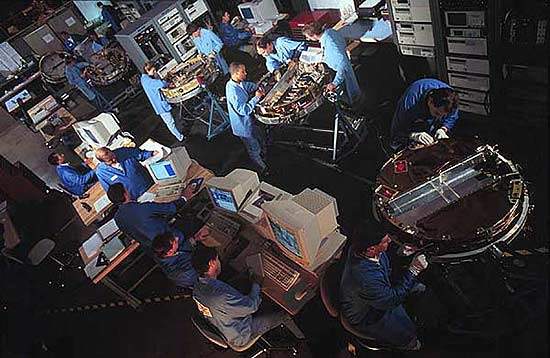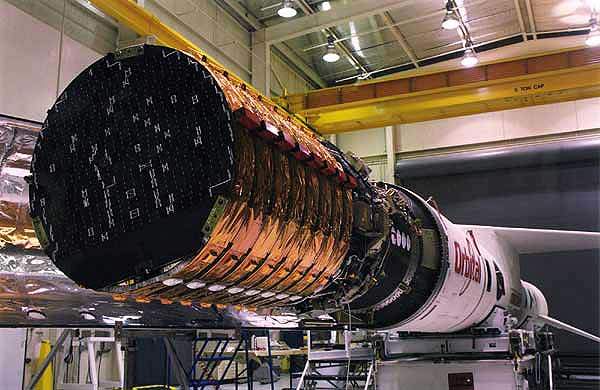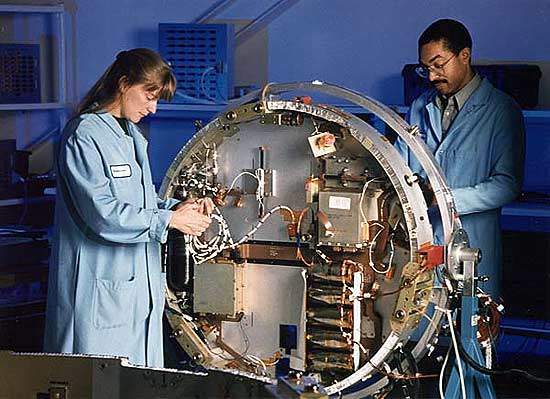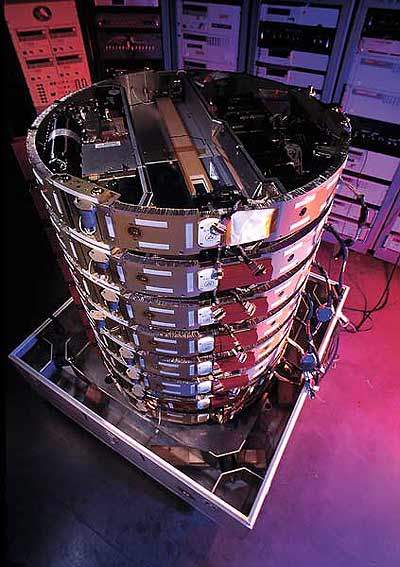Orbcomm Global, owned by Teleglobe and Orbital Sciences Corporation, provides global two-way digital monitoring, tracking and messaging services through a low-Earth-orbit satellite based data communications system. Orbcomm consists of 36 operational spacecraft, the last of which was launched in 2000.
SYSTEM DESCRIPTION
The Orbcomm system uses LEO (low Earth orbit) satellites instead of terrestrial fixed site relay repeaters to provide worldwide geographic coverage. The system is capable of sending and receiving two-way alphanumeric packets, similar to two-way paging or email. The three main components of the Orbcomm system are:
SPACE SEGMENT
The main function of Orbcomm’s satellites is to complete the link between the SCs and the switching capability at the NCC in the US or a licensee’s GCC. The satellites are ‘orbiting packet routers’ suited to ‘grab’ small data packets from sensors in vehicles, containers, vessels or remote fixed sites and relay them through a tracking Earth station and then to a GCC.
GATEWAY CONTROL CENTRE (GCC)
The GCC provides switching capabilities to link mobile SCs with terrestrial based customer systems via standard communications modes including X.400, X.25, leased line, dial-up modem, public or private data networks, and email networks including the internet.
GATEWAY EARTH STATION (GES)
Orbcomm’s GESs link the ground segment with the space segment and will be in multiple locations worldwide. The GESs provide the following functions:
The GES is redundant and has two steerable high-gain VHF antennas that track the satellites as they cross the sky. The GES transmits to a satellite at a frequency centred at 149.61MHz at 57.6kbps with a nominal power of 200W. The GES receives 3W transmissions from the satellite in the 137-138MHz range. These up and downlink channels have a 50kHz bandwidth.
NETWORK CONTROL CENTRE (NCC)
The NCC is responsible for managing the Orbcomm network elements and the US gateways through telemetry monitoring, system commanding and mission system analysis. The NCC provides the following functions:
SUSCRIBER COMMUNICATOR (SC)
There are several types of SCs. Orbcomm’s SC for fixed data applications uses low-cost VHF electronics. The simple antenna design and small package provide installation flexibility. The low-power electronics allow for extended operations using batteries, a solar panel or available power. The SC for mobile two-way messaging is a hand-held, stand-alone unit. Typically, the units have an alphanumeric keyboard and small display screen.
CONTRACTORS
The lead contractor is Orbital Sciences.









